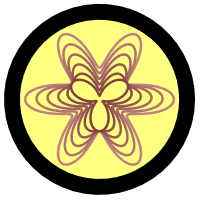As detailed on the syllabus, your assessment grade in this course will be determined by your proficiency on a variety of standards. (This is known as Standards Based Grading.)
Here is the list of standards that form the basis for this class, along with guiding questions that address each standard. You will be assessed on these standards throughout the semester.
What is different from the high-stakes "tests" that you might associate with a math class, there is an opportunity for you to re-assess your knowledge if you did not master the knowledge the first time around.
The Standards
Standard 1. Cartesian Coordinates. Can you determine the Cartesian coordinates of a given point? Can you place a point at a given coordinate pair?
Standard 2. Functions. Can you give the definition of a function? Can you determine if a given rule or curve represents a function?
Standard 3. Pattern Recognition. Can you determine a pattern in a given sequence of numbers? This pattern may involve a rule that defines the whole sequence of numbers or it may involve a rule that defines each number in terms of previous numbers. Can you write this pattern down in words? Can you write this pattern down as an equation?
Standard 4. Parent Function Recognition. For linear, parabolic, cubic, square root, and exponential functions: Given the curve of a function, can you determine which type of function it represents? Given the equation of function, can you determine what shape its curve will have?
Standard 5. Transformations. Can you determine the sequence of transformations that transforms an initial curve into a final curve? Can you determine the equation of the final curve? If you are given an equation of a composition of transformations, can you determine its graph by applying a sequence of transformations from the initial curve?
Standard 6. Trigonometric Functions. Can you identify the graphs of the sine, cosine, and tangent functions? Can you draw the graphs of these functions? Can you apply the basic transformations to these functions?
Standard 7. Basic Parametric Functions. Can you convert a function of the form y=f(x) or x=g(y) into a basic parametric function of the form (p(t),q(t))? Can you draw the graph of a basic parametric function?
Standard 8. Transformations of Parametric Functions. Can you apply reflections, translations, and dilations? How does the graph of (a•p(bt)+h,c• q(ct)+k) compare to the graph of (p(t), q(t))?
Standard 9. Linear Interpolation. Do you know the parametric equations of a line? Can you use linear interpolation to create a family of parametric curves?
Standard 10. Polar coordinates and simple polar functions. Can you convert between cartesian and polar coordinates? Can you draw the graphs of functions of the form r=c or θ=c?
Standard 11. Graphing polar equations. Can you convert a graph of the form y=f(x) to a graph of the form r=f(θ)?
Standard 12. Transformations of Polar Functions. What does r=af(b(θ-θ0))+r0 do? Can you apply rotations, reflections, and dilations?
